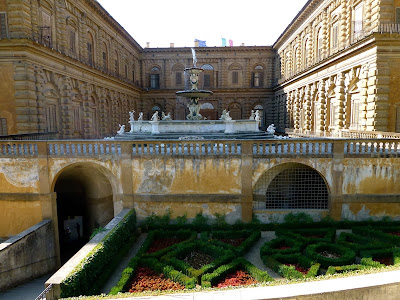The Art History BA at Buckingham University is unique in that it is constructed of four, as opposed to three, terms each year and allows students to complete their undergraduate degree in only two years. Consequently, students may continue their academic career and achieve an Art History MA in only three years. This fast-track system is beneficial, not only in terms of employability, but also as regarding cost (considering the recent increase of university fees). Essentially, the courses offered at Buckingham University present intellectually stimulating and economically viable opportunities for the aspiring Art History student.
At Buckingham University undergraduates may combine Art History with English Literature, History, Journalism, French, Spanish and Heritage Management. These subjects offer students a wide context in which to develop their art historical knowledge, allowing individuals to gain a more complete understanding of humanities disciplines whilst delving into diverse topics of interest.
The courses at Buckingham University may
also be singled out for their emphasis on practical, transferable experience
offered in multiple areas of academic preference. For instance, if students choose to combine
their Art History degree with Journalism, this will include vocational training
in aspects of art journalism or publishing.
Likewise, Buckingham’s Heritage Management option introduces students to
the international art world, instructing individuals in the management of
heritage organisation and business. In
effect, Buckingham’s courses provide students with an ideal opportunity to
acquire professional confidence in fascinating subjects.
 |
| The British Institute of Florence from across the River Arno! (centre) |
Another exceptional advantage of
Buckingham’s Art History BA is the chance for students to spend their first
academic term at the British Institute of Florence. It is here that undergraduates may choose to live and study temporarily in the beautiful, historic city of Florence
utilising the facilities offered at the Harold Acton library. All lectures and on-site visits are conducted in English, with trips to Pisa and Siena included in the course
modules. The BIF organises students’
accommodation, which are located in one of the city’s central areas. Here, undergraduates may gain an authentic
insight into the world of contemporary Florence and explore their exciting new
home alongside fellow first-year art historians!
The BIF also offers students the
prospects of learning Italian or practicing life drawing through links with the Charles Cecil Studios and the British Institute language
school. On both a personal and academic level, the Institute seeks to support Buckingham's undergraduates during their time in Florence, providing a welcome introduction and ensuring newcomers have the most fun and fulfilling experience possible. With these incentives, the BIF hopes this inspiring opportunity will act as a memorable benchmark for students’ future careers.
Here is an excerpt from the daily
journal of a Buckingham University undergraduate, Gemma Plumpton, currently
undertaking her first term in Art History at the British Institute of Florence:
Wednesday, 30th October
'...I had already read a bit about the Birth
of Mary scene from here, but did not realise there were so many portraits
within the whole fresco cycle, or that the commissioning Tornabuoni family were
so close to the Medici. Since the highest part of the fresco is 30m off the
ground it was interesting that Ghirlandaio took this into consideration when
painting; the figures at the top are three times the size of those at the
bottom, so they are all clear to us from the ground. The frescoes in an outer
chapel done by Andrea Buonarotto 1365-7 were also beautiful, as on the whole
they were in very good condition.’
 |
| Domenico Ghirlandaio, The Birth of Mary, 1486-1490, Fresco, Capella Tournabouni, Santa Maria Novella, Florence. |
...With
Carolyn this afternoon we went to the Pitti Palace, to look at the
Impressionist exhibition, modern art gallery, and another gallery containing
mostly Renaissance paintings. I really enjoyed looking at and analysing the
impressionist pieces, as it is a movement I have hardly studied before but find
very visually appealing, so it was good to learn more about the features of the
movement. We also compared French impressionist works to Tuscan pieces, which
on the whole appear less painterly and also not so interested in light and
shadows; I find the French impressionists' paintings to be more beautiful and
interesting. One of the main reasons why I like impressionist works is because
they so obviously have been painted, by a real person; with many renaissance
paintings they can be so realistic that you forget someone actually created
it.
 |
| A View of the Pitti Palace from the Boboli Gardens. |
...Overall there is so much to see within
the Pitti Palace that one trip (though I have been twice now) could never be
enough, and I shall surely be returning soon.’
 |
| 2013 Buckingham Art History students at the Museo degli Argenti! |
Spending time in Florence is certainly
the perfect way to begin a degree in Art History. Buckingham University and the BIF offer
students a memorable and rewarding experience to be shared amongst new friends
in a stimulating, energetic environment. Reiterating Gemma's final statement, by the end of their Florentine journey, the students of Buckingham will be sure to return in the future!
If you wish to learn more about Buckingham University’s Art History BA degrees, please follow the links below:
http://www.buckingham.ac.uk/directory/by-department/art-history/
- Ellie Porter, HOA Intern



Nessun commento:
Posta un commento